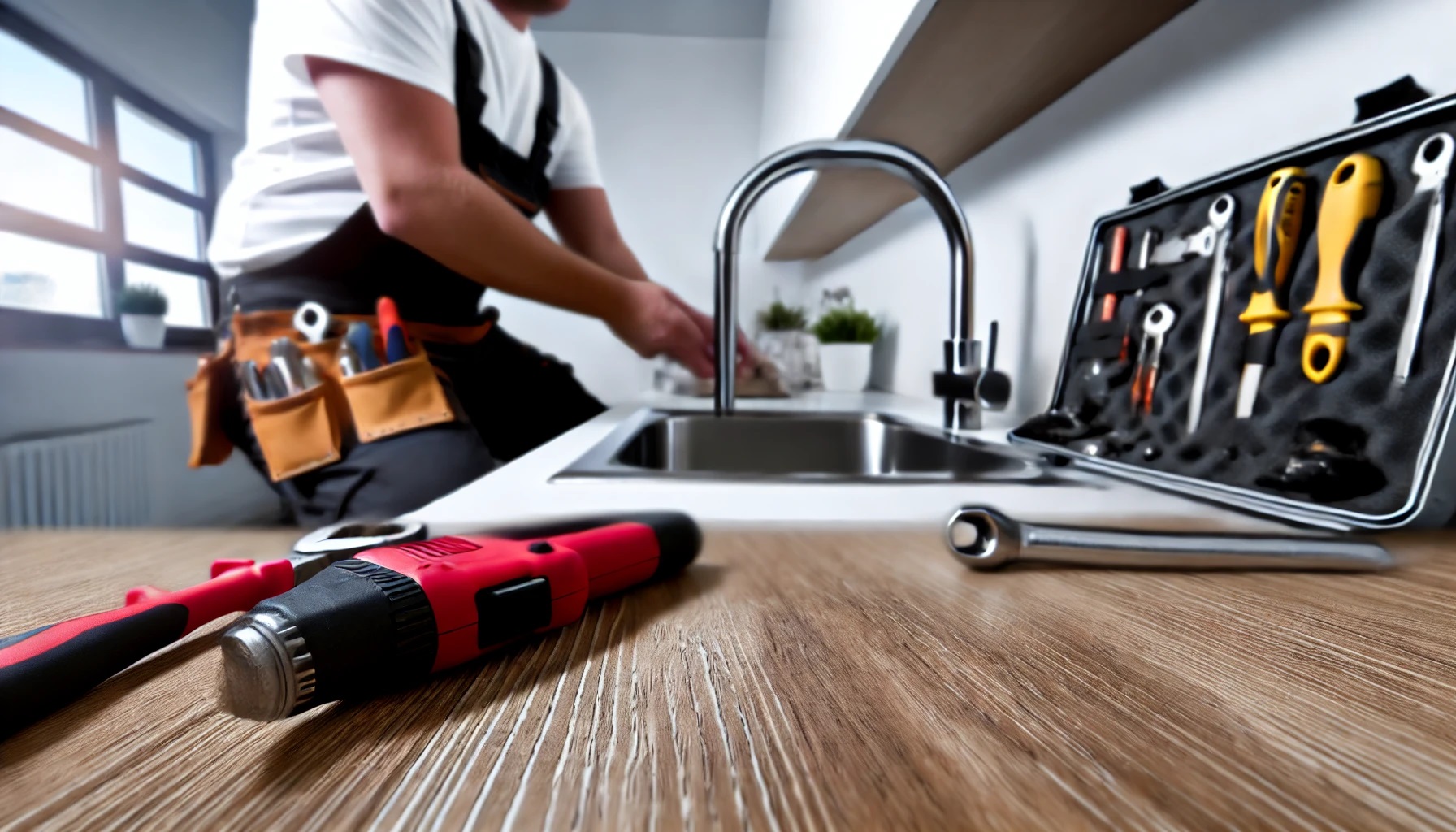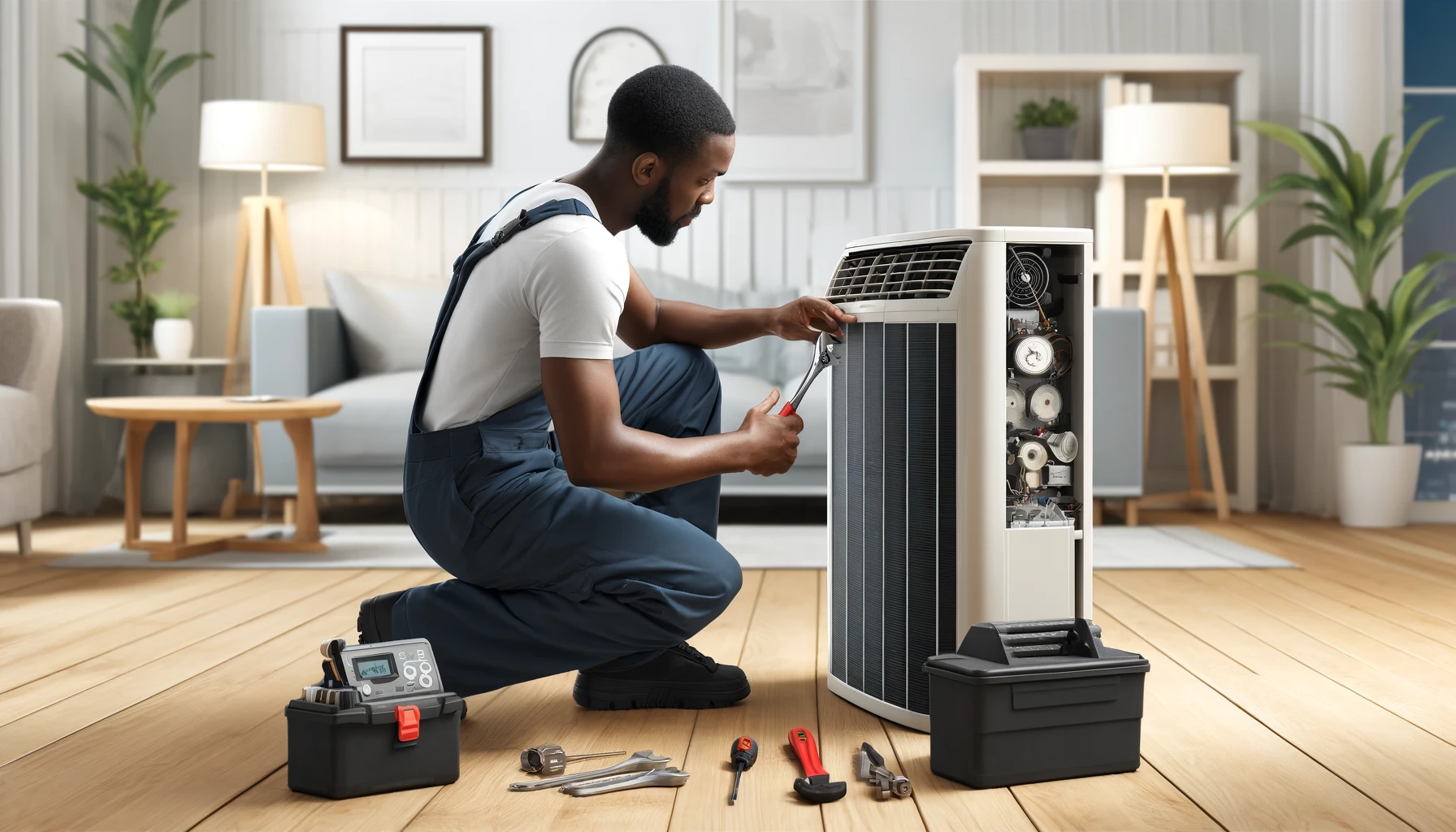Thermal insulation is essential for maintaining a warm and energy-efficient home, especially in regions like Cape Town, South Africa. With its unique climate challenges, Cape Town residents often seek effective ways to keep their homes warm during colder months. Implementing proper thermal insulation not only enhances comfort but also significantly reduces energy costs.
This article will explore various thermal insulation techniques and materials, providing practical tips on how to heat up your home efficiently. Whether you’re considering a DIY project or hiring a professional, understanding the benefits and options available can help you make informed decisions to improve your home’s insulation and overall warmth.
Understanding Thermal Insulation
Thermal insulation is the process of reducing heat transfer between objects in thermal contact or within the range of radiative influence. It is a crucial component in maintaining a comfortable indoor environment, especially in regions like Cape Town, South Africa, where the climate can vary significantly.
Effective thermal insulation works by creating a barrier that reduces the loss of heat from the inside of your home to the outside. This not only keeps your home warmer during the colder months but also helps in reducing energy consumption, leading to lower heating costs.
There are several key benefits of thermal insulation:
- Energy Efficiency: Proper insulation reduces the need for excessive heating, thereby lowering energy bills.
- Comfort: Insulation maintains a consistent indoor temperature, ensuring a comfortable living environment.
- Environmental Impact: By reducing energy consumption, insulation helps decrease greenhouse gas emissions, contributing to environmental sustainability.
Understanding these benefits highlights the importance of investing in quality thermal insulation for your home in Cape Town.

Types of Thermal Insulation Materials
When it comes to thermal insulation, choosing the right material is crucial for maximizing efficiency and effectiveness. Here are some common types of thermal insulation materials, each with its unique advantages and applications:
1. Fiberglass Insulation
- Description: Made from fine glass fibres, fibreglass insulation is one of the most commonly used insulation materials.
- Advantages: It is affordable, non-combustible, and has excellent thermal and acoustic insulation properties.
- Applications: Ideal for insulating walls, attics, and floors.
- Disadvantages: Can cause skin irritation and requires protective gear during installation.
2. Cellulose Insulation
- Description: Composed of recycled paper products treated with fire retardants.
- Advantages: Environmentally friendly, effective at filling gaps and crevices, and has good thermal performance.
- Applications: Commonly used in wall cavities and attic floors.
- Disadvantages: Can settle over time, reducing its effectiveness, and may absorb moisture if not properly installed.
3. Foam Insulation
- Types: Includes spray foam and rigid foam boards.
- Spray Foam: Expands to fill gaps, providing an airtight seal.
- Rigid Foam Boards: Made from polystyrene, polyurethane, or polyisocyanurate.
- Advantages: High R-values, excellent air sealing properties, and moisture resistance.
- Applications: Suitable for walls, roofs, and foundations.
- Disadvantages: More expensive than other materials and requires professional installation.
4. Mineral Wool Insulation
- Description: Made from natural or synthetic minerals, including rock wool and slag wool.
- Advantages: Non-combustible, excellent sound insulation, and resistant to mould and mildew.
- Applications: Effective for walls, floors, and ceilings.
- Disadvantages: Heavier than other insulation materials and may be more expensive.
5. Reflective Insulation
- Description: Consists of reflective materials like aluminum foil, designed to reflect heat away.
- Advantages: Particularly effective in hot climates to reduce cooling costs by reflecting radiant heat.
- Applications: Often used in attics, roofs, and walls.
- Disadvantages: Less effective in cold climates and needs an air gap to work effectively.
6. Natural Fiber Insulation
- Types: Includes materials like cotton, sheep’s wool, and hemp.
- Advantages: Sustainable, biodegradable, and low in toxicity.
- Applications: Suitable for walls, roofs, and floors.
- Disadvantages: May be more expensive and less widely available than synthetic options.
Choosing the right insulation material depends on various factors, including the specific needs of your home, budget, and environmental considerations. Each material has its strengths and weaknesses, so it’s important to evaluate them carefully to determine the best fit for your home in Cape Town.

Assessing Your Home’s Insulation Needs
Before upgrading your home’s insulation, it’s crucial to evaluate its current state to identify areas needing improvement. A comprehensive assessment helps ensure you focus on the most critical parts, making your home more energy-efficient and comfortable.
Conducting a Visual Inspection
Start with a thorough visual inspection of your home. Look for visible gaps and cracks around windows, doors, electrical outlets, and plumbing fixtures where heat may escape. Sealing these areas with caulking or weatherstripping can significantly reduce heat loss. Inspect the attic and basement for signs of inadequate insulation, such as exposed joists, missing insulation, or moisture damage.
Measuring Insulation Levels
Next, measure the thickness of the existing insulation in your attic, walls, and floors. Compare these measurements to the recommended levels for Cape Town’s climate. The South African Bureau of Standards (SABS) provides guidelines on appropriate insulation levels for different regions. Identifying the type of insulation currently installed will also help determine its effectiveness and whether it needs upgrading.
Using Thermal Imaging
Consider using thermal imaging technology to detect areas of heat loss. Hiring a professional energy auditor who uses thermal imaging cameras can help visualize where insulation is lacking. For a DIY approach, affordable thermal cameras that attach to smartphones are available, allowing you to identify cold spots in your home.
Performing an Energy Audit
A professional energy audit provides detailed insights into your home’s energy efficiency. An auditor will assess insulation, air leaks, heating and cooling systems, and overall energy usage. If you prefer a DIY approach, you can conduct your own energy audit by checking for drafts, examining heating and cooling bills, and inspecting insulation levels. Online resources and checklists can guide you through this process.
Considering Seasonal Variations
Assess how your home performs during different seasons. In Cape Town, where temperatures can vary, it’s important to ensure your insulation can keep your home cool in summer and warm in winter. Additionally, check for signs of moisture accumulation, as this can compromise insulation effectiveness and lead to mould growth.
Prioritizing Key Areas
Focus on key areas that significantly impact your home’s insulation. The attic is a critical area; proper attic insulation can reduce heat loss dramatically. Ensure exterior walls are adequately insulated to prevent heat transfer, and consider insulating floors, especially those over unheated spaces like garages or basements, to improve overall comfort. Evaluate the insulation around windows and doors, and consider upgrading to double-glazed windows and adding weatherstripping to doors.
By thoroughly assessing your home’s insulation needs, you can make informed decisions about where to focus your efforts and investments. This will ensure your home remains warm, energy-efficient, and comfortable throughout the year.

DIY vs. Professional Installation
When it comes to thermal insulation, homeowners must decide whether to tackle the project themselves or hire a professional. Both approaches have their advantages and considerations, and the right choice depends on your skills, budget, and the complexity of the insulation needs.
DIY Installation
For those with a penchant for home improvement, DIY thermal insulation can be a cost-effective option. Installing insulation yourself allows you to save on labour costs and provides the satisfaction of completing a project on your own. Materials like fibreglass batts, reflective insulation, and rigid foam boards are relatively straightforward to install with the right tools and protective gear.
However, DIY insulation requires a solid understanding of installation techniques to ensure effectiveness. Improperly installed insulation can lead to gaps, air leaks, and reduced thermal performance. It’s essential to follow manufacturer guidelines closely and take all necessary safety precautions, especially when handling materials like fibreglass, which can cause skin irritation. Additionally, DIY projects may not be suitable for all areas of the home, particularly those requiring specialized equipment or expertise, such as spray foam insulation in tight or hard-to-reach spaces.
Professional Installation
Hiring a professional for your thermal insulation needs ensures that the job is done correctly and efficiently. Professionals have the expertise to recommend the best insulation materials and methods for your specific situation. They can perform a thorough assessment of your home, identifying areas that require insulation and addressing any issues related to air leaks or moisture control.
Professional installers are equipped with advanced tools and materials that may not be readily available to DIY enthusiasts. For example, spray foam insulation, which provides an excellent air seal and high R-value, is best applied by trained professionals. Additionally, professionals can handle large or complex projects more quickly and safely than most homeowners.
While the upfront cost of professional installation is higher than a DIY project, the long-term benefits often outweigh the initial expense. Properly installed insulation maximizes energy efficiency, reduces heating costs, and ensures a comfortable living environment. Furthermore, professional work typically comes with a warranty, providing peace of mind that any issues will be addressed.
Making the Decision
When deciding between DIY and professional installation, consider the scope of your thermal insulation project and your comfort level with home improvement tasks. For smaller, straightforward projects, DIY may be a viable option. However, for larger or more complex needs, such as insulating an entire home or addressing specific problem areas, professional installation is likely the better choice.
Ultimately, the goal is to ensure effective thermal insulation that enhances your home’s energy efficiency and comfort. Whether you choose to do it yourself or hire a professional, taking the time to assess your needs and plan accordingly will help you achieve the best results for your home in Cape Town.

Insulating Different Parts of Your Home
Effective thermal insulation involves addressing various parts of your home to ensure comprehensive coverage. Each area has unique requirements and challenges, so it’s important to understand the best practices for insulating each one.
Attic Thermal Insulation
The attic is one of the most critical areas to insulate because it is a major source of heat loss. Proper attic thermal insulation can significantly reduce heating costs and improve overall comfort. Materials such as fibreglass batts, blown-in cellulose, and spray foam are commonly used in attics. Blown-in insulation is particularly effective for filling irregular or hard-to-reach spaces. It’s essential to seal any air leaks before adding insulation to prevent warm air from escaping through the attic.
Wall Insulation
Walls account for a large surface area of your home and play a crucial role in maintaining indoor temperature. There are several methods for insulating walls, including cavity wall insulation, which involves injecting foam or loose-fill insulation into the wall cavities.
Another method is external wall insulation, where insulation boards are fixed to the exterior walls and covered with a protective render. This method not only improves thermal efficiency but also enhances the building’s exterior appearance. For existing homes, insulating interior walls with rigid foam boards or fibreglass batts is an effective way to improve insulation without major structural changes.
Floor Insulation
Insulating floors, particularly those above unheated spaces like garages or crawl spaces, can significantly reduce heat loss. Rigid foam boards and fibreglass batts are common materials used for floor thermal insulation. In older homes with suspended wooden floors, adding insulation between the joists can improve thermal efficiency. For concrete floors, underfloor heating systems combined with rigid insulation boards provide both insulation and a comfortable heating solution.
Windows and Doors
Windows and doors are common sources of heat loss, so proper insulation around these areas is essential. Double-glazed windows provide better insulation compared to single-pane windows by creating an air gap that reduces heat transfer. Additionally, installing weatherstripping around doors and windows can prevent drafts and improve thermal efficiency. Heavy curtains or thermal blinds can also help retain heat during colder months.
Basement and Crawl Space Insulation
Basements and crawl spaces are often overlooked but can significantly impact your home’s overall insulation. Insulating basement walls with rigid foam boards or spray foam can prevent heat loss and moisture buildup. Crawl spaces should be insulated and sealed to prevent cold air from entering and warm air from escaping. Encapsulating the crawl space with a vapor barrier and insulating the walls and floor can improve energy efficiency and indoor air quality.
Roof Insulation
While similar to attic thermal insulation, insulating the roof directly can be beneficial, especially in homes with vaulted ceilings or limited attic space. Spray foam insulation is highly effective for roofs, providing excellent coverage and an airtight seal. Reflective insulation can also be used under roof tiles or metal roofs to reflect heat away during the hot summer months, keeping the home cooler.
By addressing these key areas, you can ensure your home is well-insulated and energy-efficient. Each part of the home requires specific thermal insulation methods and materials to maximize thermal efficiency and comfort.
Whether you choose to do it yourself or hire a professional, understanding the insulation needs of different parts of your home will help you achieve the best results for your property in Cape Town.

Energy-Efficient Heating Solutions
While proper thermal insulation is essential for maintaining a warm home, combining it with energy-efficient heating solutions can further enhance comfort and reduce energy costs. Here are some effective heating methods that complement thermal insulation:
Heat Pumps
Heat pumps are an excellent energy-efficient heating solution that works well with good thermal insulation. They transfer heat from the outside air or ground into your home, providing a reliable and cost-effective heating source. Air-source heat pumps are popular for their efficiency and ease of installation, while ground-source (geothermal) heat pumps offer even greater efficiency but require more extensive installation. Heat pumps are particularly effective in well-insulated homes, as the reduced heat loss allows the system to operate more efficiently.
Radiant Floor Heating
Radiant floor heating systems are an efficient way to distribute heat evenly throughout your home. These systems circulate warm water or electric heating elements beneath the floor, providing consistent warmth. When paired with proper thermal insulation, radiant floor heating can significantly reduce heating costs by maintaining a steady temperature with minimal energy consumption. This method is ideal for homes with well-insulated floors, ensuring maximum efficiency and comfort.
Programmable Thermostats
Installing programmable thermostats allows you to control your heating system more precisely, reducing energy waste. These devices can be set to lower the temperature when you are not home and raise it before you return, ensuring a comfortable environment without unnecessary energy usage. When used in conjunction with thermal insulation, programmable thermostats help maintain a consistent indoor temperature, optimizing heating efficiency and reducing costs.
Energy-Efficient Boilers and Furnaces
Upgrading to energy-efficient boilers or furnaces can make a significant difference in your heating costs. Modern, high-efficiency models are designed to use less fuel while providing the same amount of heat. These systems work best in homes with good thermal insulation, as the reduced heat loss allows them to operate more effectively and efficiently. Look for models with high Annual Fuel Utilization Efficiency (AFUE) ratings to ensure maximum energy savings.
Solar Heating Systems
Solar heating systems harness the sun’s energy to provide heat for your home. These systems can range from simple solar air heaters to more complex solar thermal systems that heat water for space heating. While the initial investment can be higher, solar heating systems offer long-term savings and are an environmentally friendly option. Proper thermal insulation enhances the effectiveness of solar heating by minimizing heat loss, ensuring that the captured solar energy is used efficiently.
Insulated Curtains and Window Treatments
Using insulated curtains or window treatments can further enhance the benefits of thermal insulation. These products add an extra layer of insulation to your windows, reducing heat loss and helping to maintain a comfortable indoor temperature. Insulated curtains are particularly effective at night when temperatures drop, providing an additional barrier against the cold.
Fireplaces and Wood-Burning Stoves
For those who enjoy the ambience of a traditional heating source, modern fireplaces and wood-burning stoves can be an effective way to heat your home. High-efficiency models are designed to burn fuel more completely, providing more heat with less smoke and emissions. When used in a well-insulated home, these heating sources can be a cosy and efficient way to stay warm during the colder months.
By combining thermal insulation with these energy-efficient heating solutions, you can create a warm, comfortable, and cost-effective living environment. Each method works best when your home is properly insulated, as this reduces heat loss and maximizes the efficiency of your heating system. Investing in both insulation and efficient heating technologies ensures that your home remains comfortable throughout the year, no matter the weather in Cape Town.

Contact SST for Your Thermal Insulation Needs!
Proper thermal insulation is essential for maintaining a warm and energy-efficient home, especially in Cape Town, where the climate can vary significantly. By understanding the benefits of thermal insulation and combining it with energy-efficient heating solutions, homeowners can enjoy a comfortable living environment while reducing energy costs. Whether you choose to undertake a DIY project or hire professionals, investing in high-quality insulation materials and methods is crucial for maximizing the effectiveness of your home’s insulation.
For expert advice and professional assistance with your thermal insulation needs, contact Sustainable Systems Technologies (SST). Our team of experienced professionals is dedicated to helping you achieve the best insulation solutions for your home, ensuring maximum comfort and energy efficiency. Reach out to SST today to schedule a consultation and take the first step towards a warmer, more efficient home.




